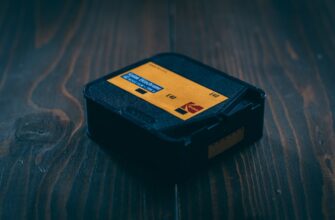Why Offline Account Protection Can’t Be Ignored
In our hyper-connected world, we often focus on digital threats like hackers and phishing scams. But what about risks when you’re offline? Physical security breaches – stolen devices, shoulder surfing, or misplaced documents – can compromise accounts just as severely. The good news? You don’t need a big budget to protect account offline low cost. This guide reveals practical, wallet-friendly strategies to shield your sensitive data from real-world vulnerabilities.
9 Low-Cost Tactics to Fortify Your Offline Security
Implement these affordable measures today to create robust physical defenses:
- Password Vault Lockdown: Store written passwords in a $10 fireproof lockbox instead of sticky notes. Treat it like your digital safe deposit box.
- Screen Privacy Shields: Apply $15 anti-glare filters to prevent shoulder surfing in public spaces – a must for coffee shop work sessions.
- Document Shredding Discipline Invest in a $25 cross-cut shredder to destroy bank statements, medical records, and any paperwork with personal identifiers.
- USB Drive Encryption: Use free tools like VeraCrypt to password-protect flash drives containing sensitive files before storing them offline.
- Biometric Device Locks: Enable fingerprint/face ID on smartphones and laptops – built-in security that costs nothing extra.
- Offline Backup Strategy: Maintain encrypted external hard drives ($40-$60) for critical data backups, disconnected when not in use to avoid remote hacking.
- Security Awareness Training: Watch free YouTube tutorials on physical social engineering tactics to recognize real-world cons.
- Travel Kits: Use RFID-blocking sleeves ($5 for 10) for credit cards and passports to prevent electronic pickpocketing.
- Home Security Basics: Reinforce door locks with $20 strike plates and install motion-sensor lights ($15) to deter physical intrusions.
Free & Budget Tools That Deliver Maximum Protection
You don’t need expensive subscriptions for core security:
- Authy/Google Authenticator (Free): Two-factor authentication apps that generate offline codes – no SMS required.
- Bitwarden (Free tier): Open-source password manager with local encryption options for offline access.
- Prey Anti-Theft (Basic free plan): Track stolen devices remotely and trigger alarm sounds.
- Windows BitLocker/macOS FileVault (Free): Built-in full-disk encryption for laptops and external drives.
- Signal (Free): Encrypted messaging with disappearing messages feature for sensitive conversations.
Implementing Your Low-Cost Defense System
Follow this action plan for seamless setup:
- Audit Physical Vulnerabilities: Identify where sensitive data lives offline (wallets, drawers, devices).
- Prioritize by Risk: Tackle high-exposure items first (e.g., unsecured devices before archived paperwork).
- Schedule Maintenance: Set quarterly reminders to update backups and shred accumulated documents.
- Educate Household Members: Conduct 10-minute family security briefings to ensure consistent practices.
- Test Your Defenses: Simulate theft scenarios – can you remotely wipe devices? Are backups current?
FAQ: Offline Account Protection on a Budget
Q: Can offline protection prevent online hacking?
A> Indirectly yes. Physical security prevents thieves from accessing devices that store passwords or session cookies, blocking a common attack vector.
Q: How often should I update offline backups?
A> For critical data (financial docs, password vaults), update monthly. For photos/media, quarterly suffices.
Q: Are paper passwords ever safe?
A> Only if stored in a locked container separate from devices, and written in code only you understand (e.g., “FB” = social media password).
Q: What’s the weakest link in offline security?
A> Human behavior. Leaving laptops unlocked in public or sharing sensitive mail visibly in recycling bins creates avoidable risks.
Q: Can I use old phones for security?
A> Absolutely! Repurpose retired smartphones as free security cameras using Alfred Camera (free app) or dedicated offline password vaults.
By combining these low-cost physical safeguards with smart digital habits, you create layered protection that’s both affordable and formidable. Remember: Security isn’t about expensive tools – it’s about consistent, conscious practices that turn everyday actions into defensive barriers.








